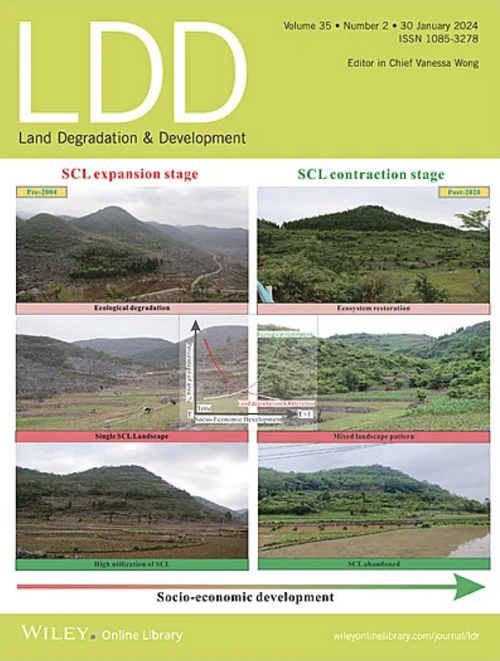Response of ESV Topographic Gradient to LULC in Mountain-River-Sea Transitional Space Based on Markov-PLUS Modeling: A Case Study of the Southwest Guangxi Karst-Beibu Gulf, China
IF 3.6
2区 农林科学
Q2 ENVIRONMENTAL SCIENCES
引用次数: 0
Abstract
The Guangxi Southwest Karst-Beibu Gulf (GSK-BG) is a complex mountain-river-sea transitional space made up of a special combination of karst mountains, river basins and coastal zones, presenting a slope zone tilted from northwest to southeast. At present, there is still a gap in identifying the characteristics of the topographic gradient response of past-present-future ecosystem service value (ESV) changes to land use and land cover (LULC) changes in the transitional space of mountains, rivers and seas. To that end, this study employed the Markov-PLUS model, land use transfer matrix and land use mapping to portray the characteristics of the changes in LULC and ESV from 2000 to 2030, as well as to analyze the analyze the LULC change towards the ESV response. Then the role of LULC transformation on ESV under different terrain gradient topographic factors was further explored to fill the current research gap. The results show: (1) The highest ESV was 479,332 million yuan in 2010 and the lowest was 473,424 million yuan in the urban development scenario (UDS). The distribution of ESV in space is shown as “high in the northwest and low in the central and southeastern part of the country”, which shows a trend of increasing and then decreasing in time. (2) Forest land (FL) is the main contributor to total ESV. The improvement in ESV in the study area was mainly due to the transfer of other land uses to FL and water body (WB), and the decrease in ESV was mainly due to the conversion of FL and WB to other land uses. (3) The topographic gradient response of ESV changes to LULC changes is more pronounced for the 2030 natural development scenario (NDS), ecological protection scenario (EPS), and UDS. The types of land transfers that predominate mainly on steep slopes at lower elevations as well as in areas with steep slopes at higher elevations include grassland (GL) and FL to unutilized land, with terrain distribution index (TDI) of 5.27 and 4.02, and bare land (BL) and FL to GL, with TDI of 4.75 and 3.53. Therefore, the topographic gradient characteristics of the region should be taken into account in the development and utilization of land resources and improvement of ESV in the mountain-river-sea transitional complex geospatial space.求助全文
约1分钟内获得全文
求助全文
来源期刊

Land Degradation & Development
农林科学-环境科学
CiteScore
7.70
自引率
8.50%
发文量
379
审稿时长
5.5 months
期刊介绍:
Land Degradation & Development is an international journal which seeks to promote rational study of the recognition, monitoring, control and rehabilitation of degradation in terrestrial environments. The journal focuses on:
- what land degradation is;
- what causes land degradation;
- the impacts of land degradation
- the scale of land degradation;
- the history, current status or future trends of land degradation;
- avoidance, mitigation and control of land degradation;
- remedial actions to rehabilitate or restore degraded land;
- sustainable land management.
 求助内容:
求助内容: 应助结果提醒方式:
应助结果提醒方式:


